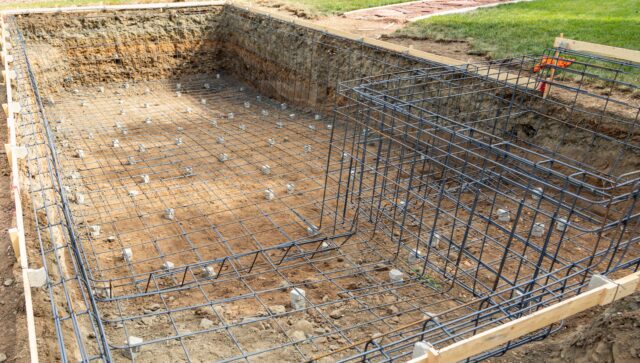
If you are managing a commercial renovation, construction, or installment project – there is no doubt you’re busy. You have deadlines to meet, materials that need to be coordinated, and schedules that need to be managed. The last thing you want is for a natural disaster or any unforeseen incident to hinder all the hard work your team has put into that project. That is why Builder’s Risk Insurance is essential.
There are plenty of risks that can wreak havoc on contractors and builders that are in the construction or renovation phase. Whether you are renovating or are about to break ground on a job, construction projects are complex with many moving pieces. And with many moving pieces, there is more opportunity for things to go wrong, such as damage caused by fires, injuries, death, theft, and even vandalism.
With all the potential risks, the best way to mitigate any of these risks and to put your mind at ease for both you and your company is to obtain Course of Construction (COC) Insurance.

Course of Construction (COC) Insurance, also known as Builder’s Risk Insurance, is a policy that covers damage to the property being built or repaired. It usually covers the contractor and builder for any damage done to the structure, machinery, and or materials. During a construction project, you will be exposed to some irrefutable risks that are unique to your industry.
This type of insurance exists to provide coverage for projects under construction against all costs of repair or replacement in a covered event. It is typically required by lenders and can help protect the contractor or builder in case they are sued for damages done to the property.
Unlike any traditional property insurance policy, this policy covers more than just any existing structure. It covers a project from the first shovel you made in the ground up to the completion of the building.
Every contractor or property owner should have builder’s risk insurance for any construction or major renovation as it protects the contractor from unforeseen damages. Builder’s Risk Insurance also helps cover additional expenses that are not directly related to construction if damages cause a delay.
Builder’s risk insurance is a pivotal part of your project as it provides protection for the structure and related materials leading up to project completion. Especially if the project is being financed, the lender will typically require for a proof of a builder’s risk policy.

A building that is under construction is more vulnerable to fire, vandalism, accidents, and even weather-related events. While General contractors pay an average of $134 per month, or $1,608 annually, for builder’s risk insurance, we can help you figure out how much coverage you need by thinking about the project and where your risks are. Estimate how long you will be needing the coverage. This typically ends when the project is done. Your policy should include specific conditions for when coverage needs to end. It may be when the policy expires or when the building is already being used.

In general, a course of construction policy helps you with any physical items involved in the building of a construction project such as materials, supplies, equipment in transport, half-built gazebos, and onsite equipment. This can include power tools, cement, tiles, aggregate and more. Damage from the following events will be covered by most policies.
You should read your course of builder’s risk insurance policy to be familiar with its limitations and exclusions. Limited coverage is provided for collapse.
A standard COC policy does not include coverage for:
While there might be instances of exclusions to the insurance policy, some items have limited coverage under a COC policy, so it’s wise to ask your agent about any additional offerings that might help fill the gaps left by a limited coverage form.
Either the homeowner, project owner or the contractor can purchase COC coverage but for residential construction, it is often easier for a contractor to purchase coverage through a reporting form type policy. Many require it by contract and factor it into the cost of the bid. The value of the project should be the construction cost, including labor, profit and of course materials.
General liability and COC Insurance are not the same. COC is a type of commercial property insurance that is designed to cover physical assets that is related to construction work while a general liability covers property damages and bodily injuries that a third party might suffer.
For a COC example – say you’re leading a swimming pool construction project, and you find that the bobcat left on site was stolen overnight. In this scenario, you need to file a claim on your COC policy to cover the cost of replacing the missing equipment. In fact, many policies would also cover the cost of renting/leasing replacement equipment to finish the job.
For a Liability example – say that the homeowner enters the construction site after hours to get their own look into the progress. It’s late in the day, sun is going down and they make a wrong step injuring their ankle in some hard pan dirt. General liability insurance can cover the injured party’s medical bills and protect your business in case of a lawsuit.
Since this insurance helps hasten a project’s delay and covers unexpected expenses, it’s useful for anyone that has a financial interest on a project’s completion to be covered under a builder’s risk policy.
To learn more about builder’s risk insurance and safeguard what you’ve built, contact us to today.